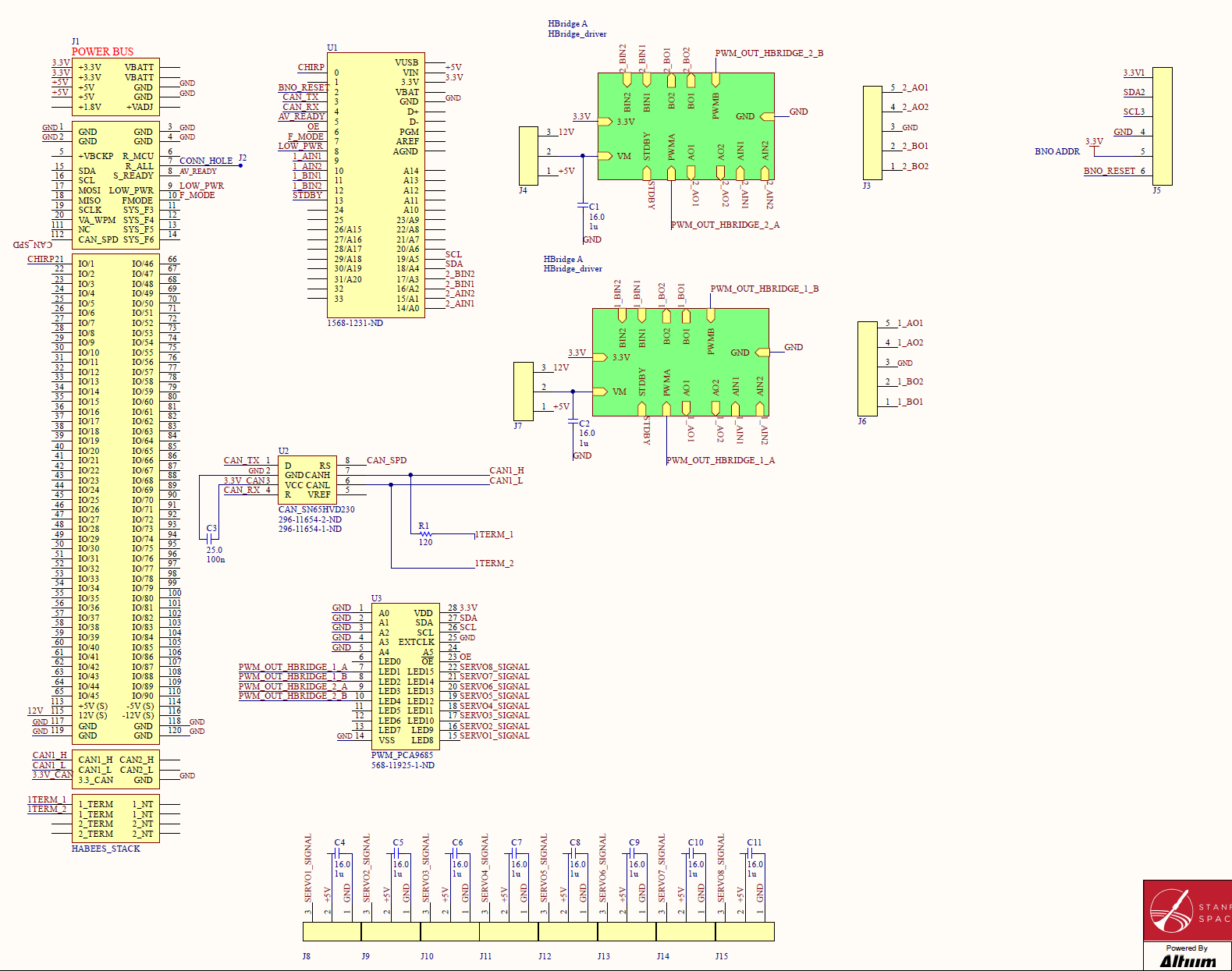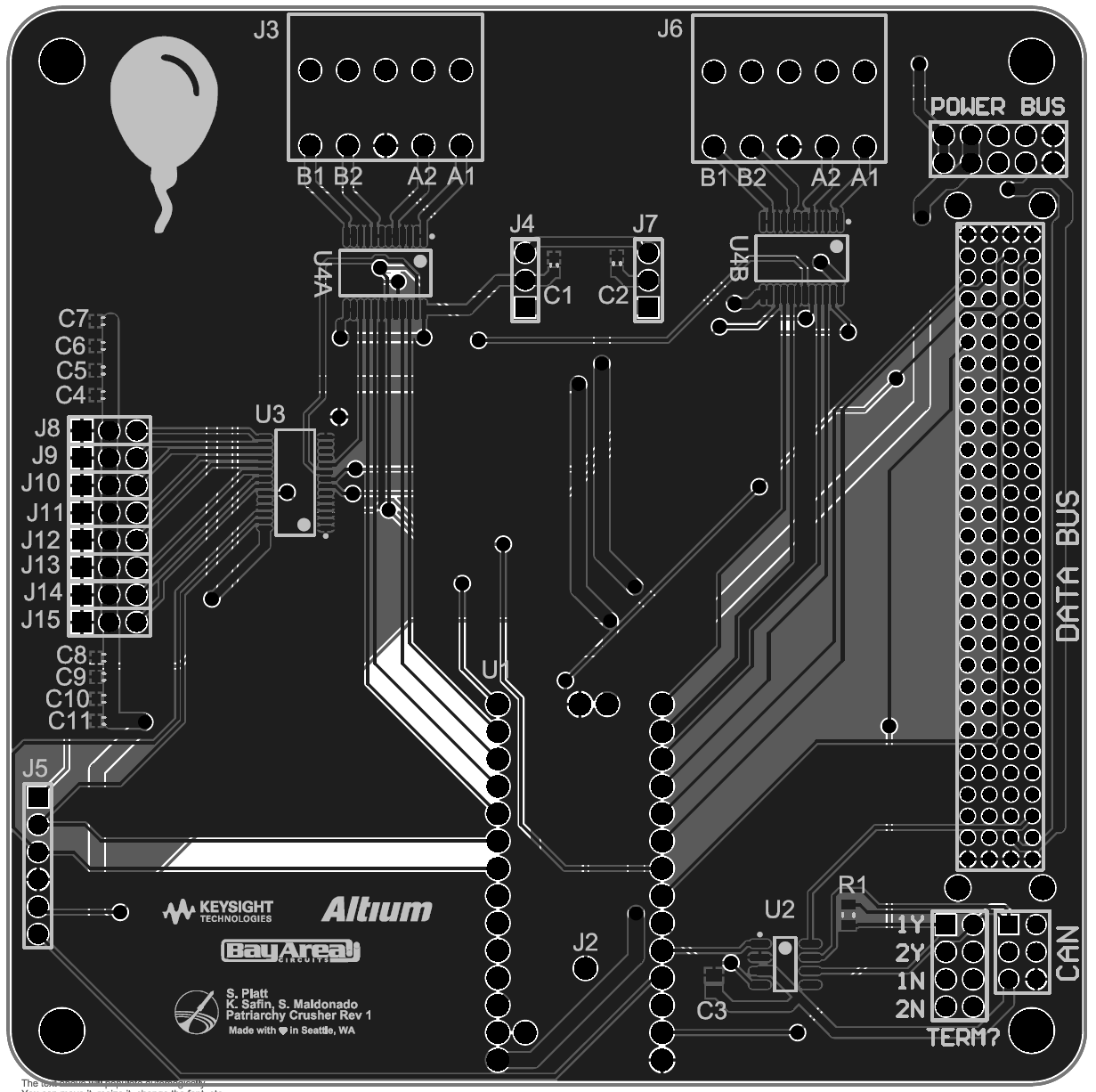Difference between revisions of "Eclipse Sun Tracking"
Jump to navigation
Jump to search
| Line 9: | Line 9: | ||
*Can Transceiver for Avionics Communication | *Can Transceiver for Avionics Communication | ||
*Terminating Jumpers for the CAN bus | *Terminating Jumpers for the CAN bus | ||
| + | |||
| + | ===Motor and Servo Connectors=== | ||
| + | *Connector spots (J8-J15) are for the male header pins. Servos can connect to these. Each Servo gets a 3.3V supply, a capacitor to smooth the movement, and a PWM signal. | ||
| + | *Connector spots (J3 and J6) are for larger motors to connect to. These connectors allow each motor to get a power, direction signal, and PWM signal. These connectors also offer extra space for GND. | ||
| + | |||
| + | ===Control System=== | ||
| + | *HBridge Drivers (U4A and U4B) take directions via i2C from the teensy and drive two motors each | ||
| + | *Jumper pin holes (J4 and J7) allow the user to choose between a 5V and 12V supply for his/her motor. There are also corresponding capacitors to smooth out any power spikes. | ||
| + | *The teensy 3.2 (U1) takes in directions from the CAN transceiver and directs the PWM driver and motor drivers | ||
| + | *The PWM driver (U3) connects one channel to each motor and servo allowing for a unique pulse length for each output. | ||
| + | |||
[[File:Pcb schematic.png]] | [[File:Pcb schematic.png]] | ||
Revision as of 22:44, 17 August 2017
The PCB, "Patriarchy Crusher," leverages the HONEY architecture to control H-Bridge motor driver ICs.
PCB Design
The design incluedes:
HONEY compliance
- DataBus connectors for regular updates from the avionics bay
- PowerBus connectors for the 5V, 3.3V and 12V power supplies
- Can Transceiver for Avionics Communication
- Terminating Jumpers for the CAN bus
Motor and Servo Connectors
- Connector spots (J8-J15) are for the male header pins. Servos can connect to these. Each Servo gets a 3.3V supply, a capacitor to smooth the movement, and a PWM signal.
- Connector spots (J3 and J6) are for larger motors to connect to. These connectors allow each motor to get a power, direction signal, and PWM signal. These connectors also offer extra space for GND.
Control System
- HBridge Drivers (U4A and U4B) take directions via i2C from the teensy and drive two motors each
- Jumper pin holes (J4 and J7) allow the user to choose between a 5V and 12V supply for his/her motor. There are also corresponding capacitors to smooth out any power spikes.
- The teensy 3.2 (U1) takes in directions from the CAN transceiver and directs the PWM driver and motor drivers
- The PWM driver (U3) connects one channel to each motor and servo allowing for a unique pulse length for each output.
Electrical Components
Mechanical Design
Applications
Eclipse Sun Tracking
The motor driver board controls motors for the sun tracking project. Project Sol reads orientation data from an IMU, the BNO055, and compares the heading to the sun's expected Azimuth. Based on the difference between the Azimuth angle and the heading angle, the teensy on Patriarchy Crusher commands the HBridge driver to turn the motor clockwise or counterclockwise. The end effect is that the GoPro is rotated to face the sun and can thus take pictures of the eclipse.

